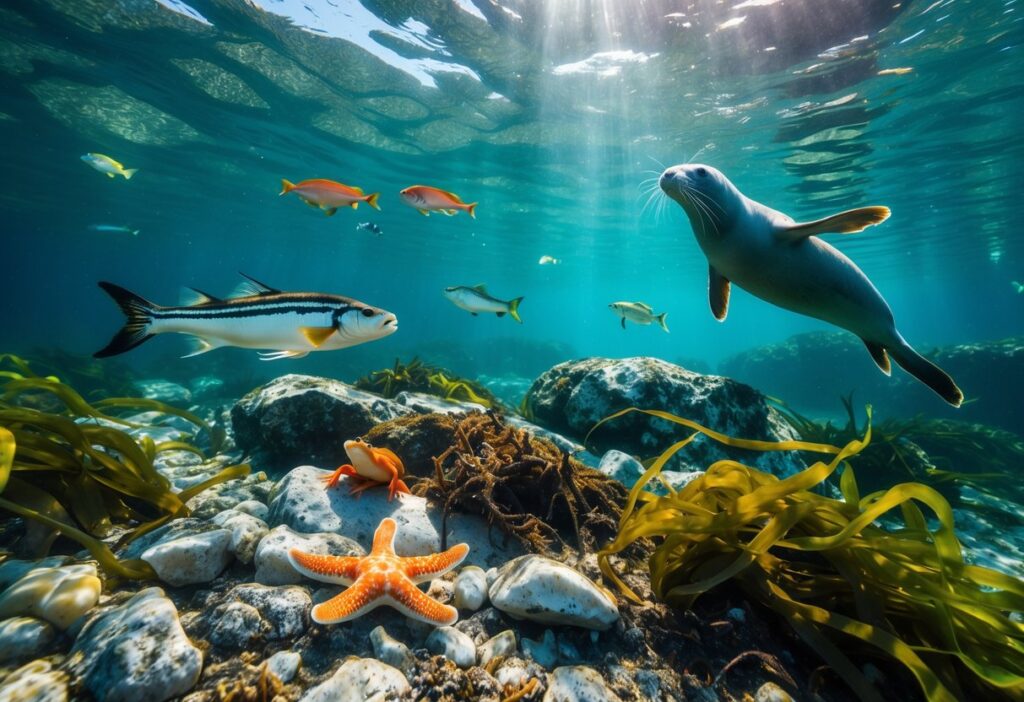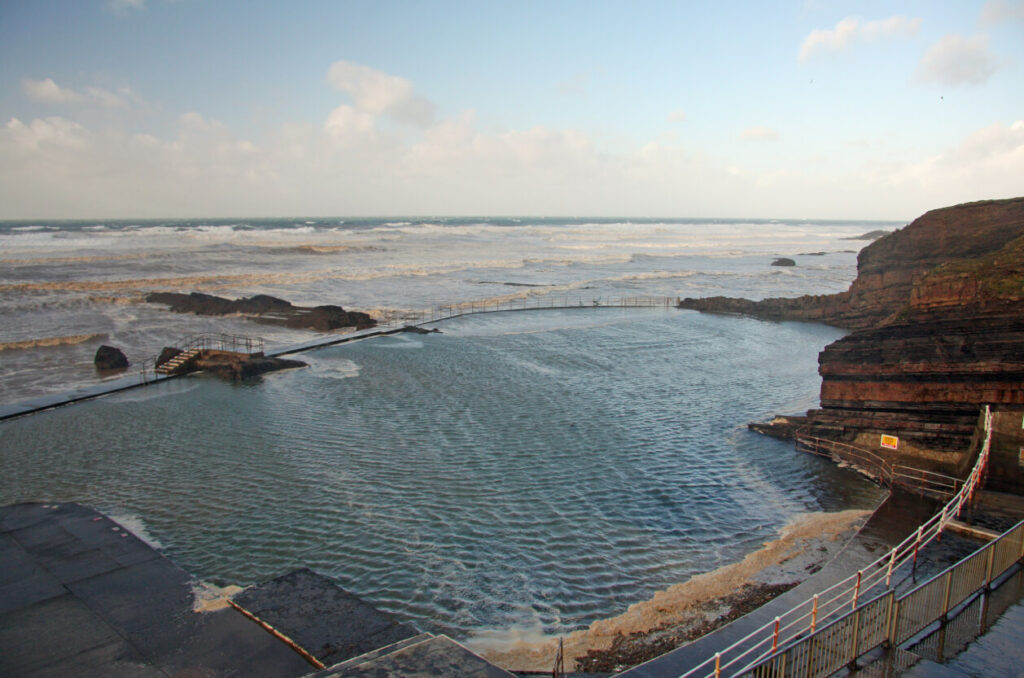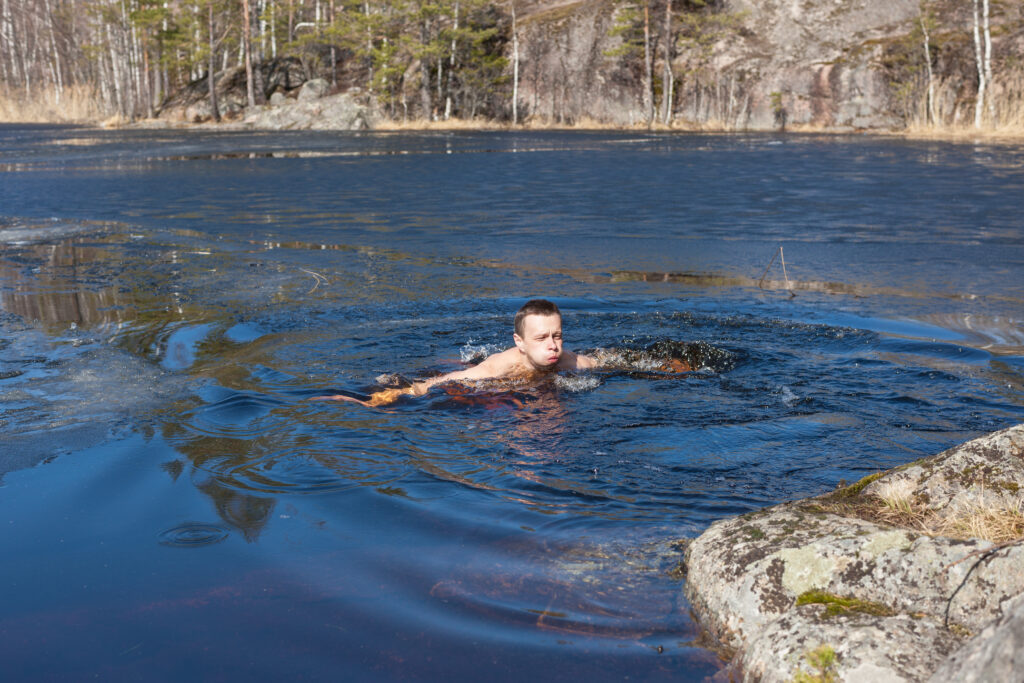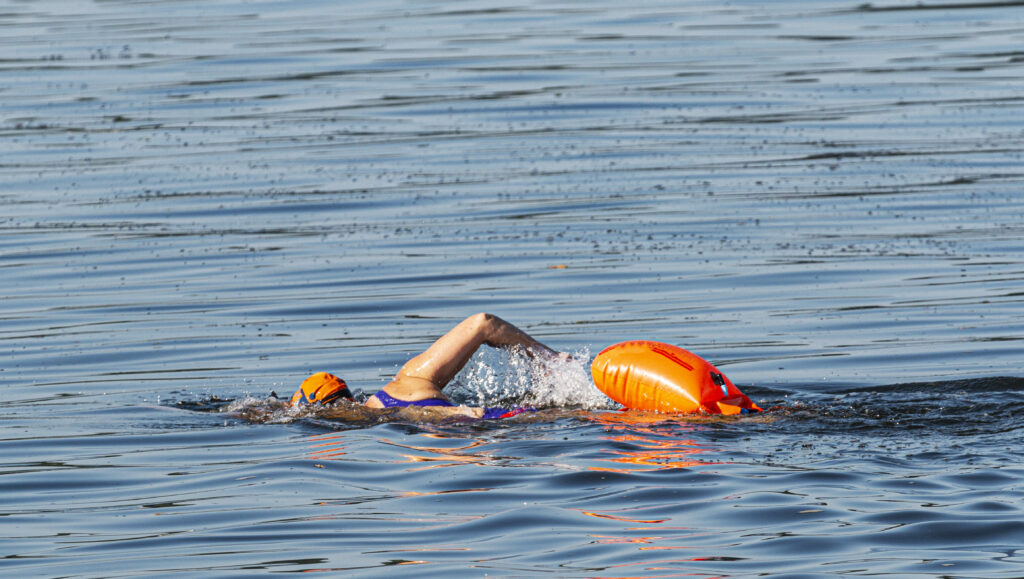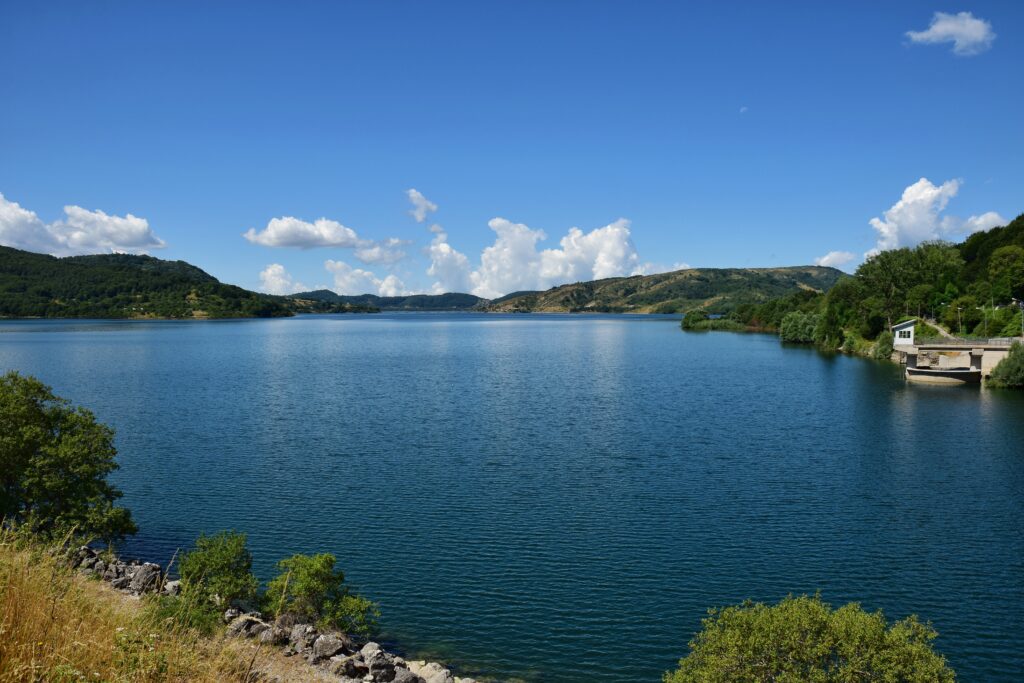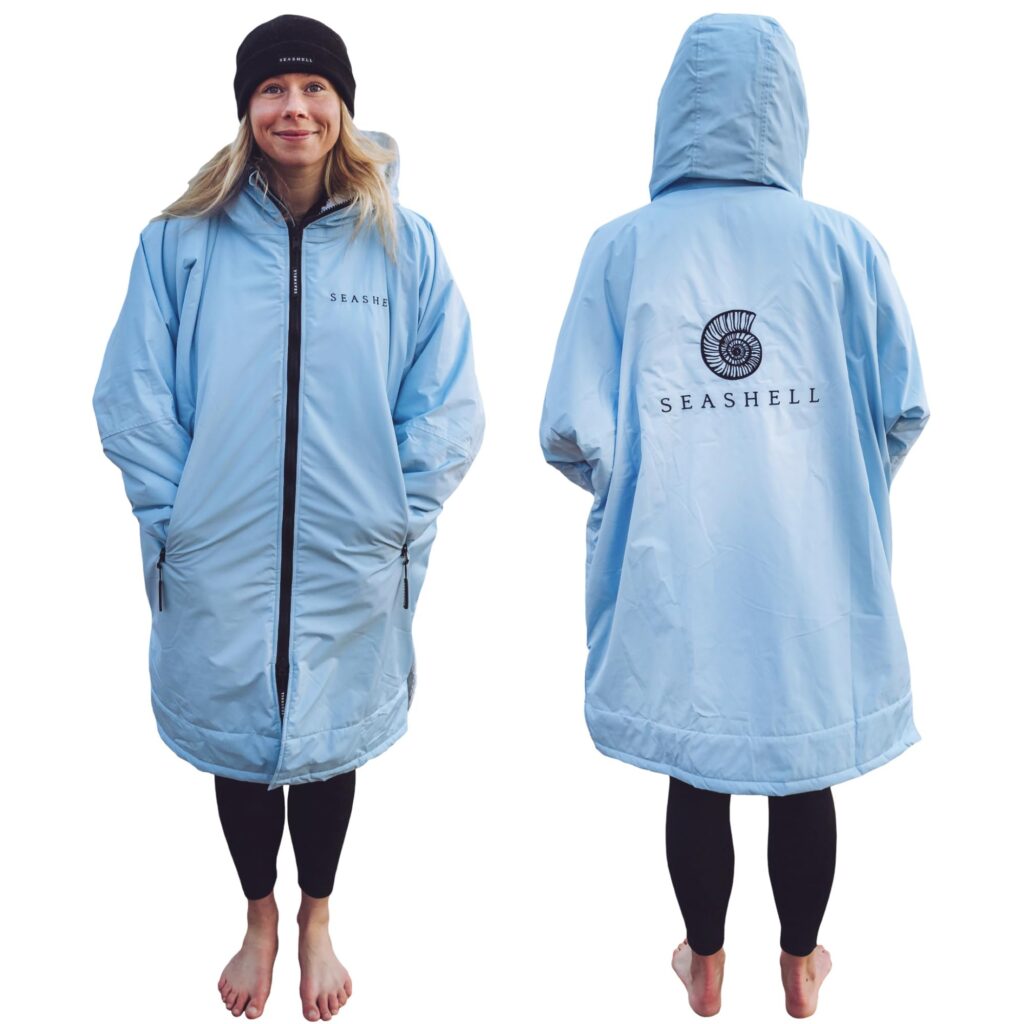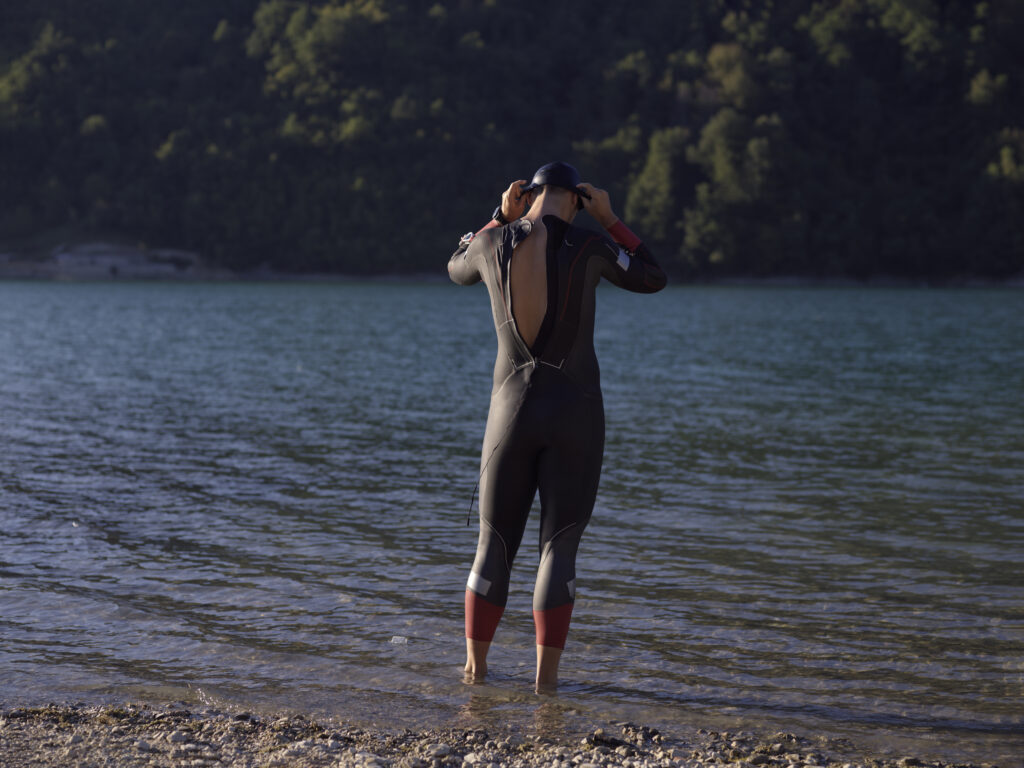The waters off England’s south coast offer swimmers a chance to encounter an amazing variety of marine life during their ocean adventures. Sea swimmers along the south coast might spot seals, dolphins, jellyfish, crabs, small fish species like blennies, and even the occasional basking shark during summer months. The English Channel’s rich marine ecosystem supports everything from tiny sea slugs to large marine mammals.
The British coast provides habitat for creatures that have adapted to shallow coastal waters and tidal zones. Swimmers often encounter harmless species like common blennies hiding amongst rocks, hermit crabs scuttling across the seabed, and colourful sea anemones attached to underwater surfaces. Half of the world’s grey seal population calls British shores home, making seal sightings quite common for coastal swimmers.
Understanding what lives beneath the surface helps swimmers appreciate the underwater world they’re entering. From small invertebrates that cling to rocks to larger mammals that visit these waters seasonally, the south coast’s marine environment offers glimpses into a diverse ecosystem that thrives just metres from popular swimming beaches.
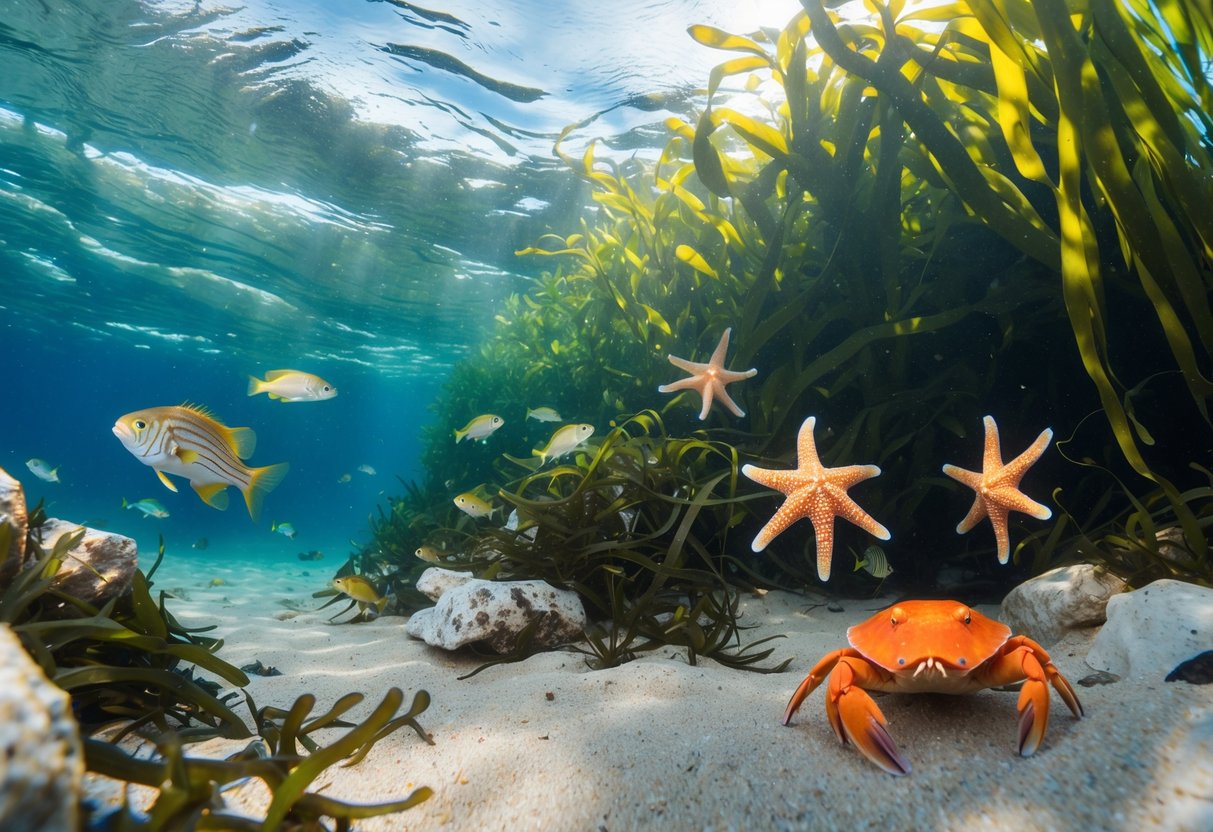
Key Takeaways
- The south coast hosts diverse marine life including seals, dolphins, fish, crabs, and seasonal visitors like basking sharks
- Most sea creatures encountered by swimmers are harmless species adapted to shallow coastal waters
- The English Channel’s ecosystem supports both year-round residents and seasonal visitors that migrate through these waters
Overview of the Marine Ecosystem on the South Coast
The South Coast’s marine ecosystem thrives due to unique coastal habitats, warm English Channel currents, and distinct seasonal patterns that bring different species throughout the year. These factors create ideal conditions for diverse marine life that swimmers frequently encounter.
Unique Marine Habitats
The South Coast features several distinct marine ecosystems that support abundant wildlife. Rocky reefs dominate areas like Cornwall and Devon, providing shelter for crabs, sea anemones, and small fish.
Seagrass meadows flourish in shallow bays and estuaries. These underwater grasslands serve as nurseries for juvenile fish and feeding grounds for seahorses and cuttlefish.
Sandy beaches and mudflats create habitats for burrowing creatures. Razor clams, lugworms, and flatfish thrive in these environments.
Key habitat types include:
- Rocky intertidal zones
- Kelp forests in deeper waters
- Estuarine environments where rivers meet the sea
- Chalk cliffs with underwater caves
The variety of habitats means swimmers encounter different species depending on their location. Rocky areas typically host more colourful marine life, whilst sandy bottoms attract bottom-dwelling species.
Influence of the English Channel
The English Channel’s unique characteristics shape the marine life found along the British coast. Warm Gulf Stream waters mix with cooler Atlantic currents, creating ideal temperatures for both temperate and warmer-water species.
Tidal ranges along the South Coast are significant. Spring tides can exceed 4 metres in some areas, exposing large areas of seabed twice daily.
The Channel’s relatively shallow depth (averaging 120 metres) allows sunlight to penetrate easily. This supports photosynthesis in seaweeds and marine plants.
Water characteristics:
- Temperature ranges from 6°C in winter to 18°C in summer
- High dissolved oxygen levels support diverse fish populations
- Nutrient-rich waters from river inputs feed plankton blooms
Strong tidal currents bring nutrients from deeper Atlantic waters. This creates productive feeding areas that attract larger marine animals like dolphins and seals.

Seasonal Changes in Marine Life
Marine life patterns change dramatically throughout the year along the South Coast. Summer months bring the greatest variety of species, whilst winter sees many animals move to deeper waters.
Spring (March-May) marks the beginning of increased activity. Plankton blooms start, providing food for filter-feeders like mussels and barnacles. Early migrant species begin arriving.
Summer (June-August) offers peak diversity. Basking sharks arrive in British waters to feed on plankton. Jellyfish populations peak, including barrel jellyfish and lion’s mane species.
Autumn (September-November) sees continued warm water temperatures. Many fish species are still active, though some begin moving offshore.
Winter (December-February) brings quieter waters. Hardy species like shore crabs and limpets remain active in rockpools, whilst most fish move to deeper, warmer waters.
Water temperature drives these seasonal patterns more than daylight hours. Even small temperature changes can trigger mass movements of marine species.
Marine Mammals Encountered by Sea Swimmers
Swimmers along England’s south coast regularly encounter seals, dolphins, and harbour porpoises in coastal waters. These marine mammals are legally protected and should be observed from a respectful distance.
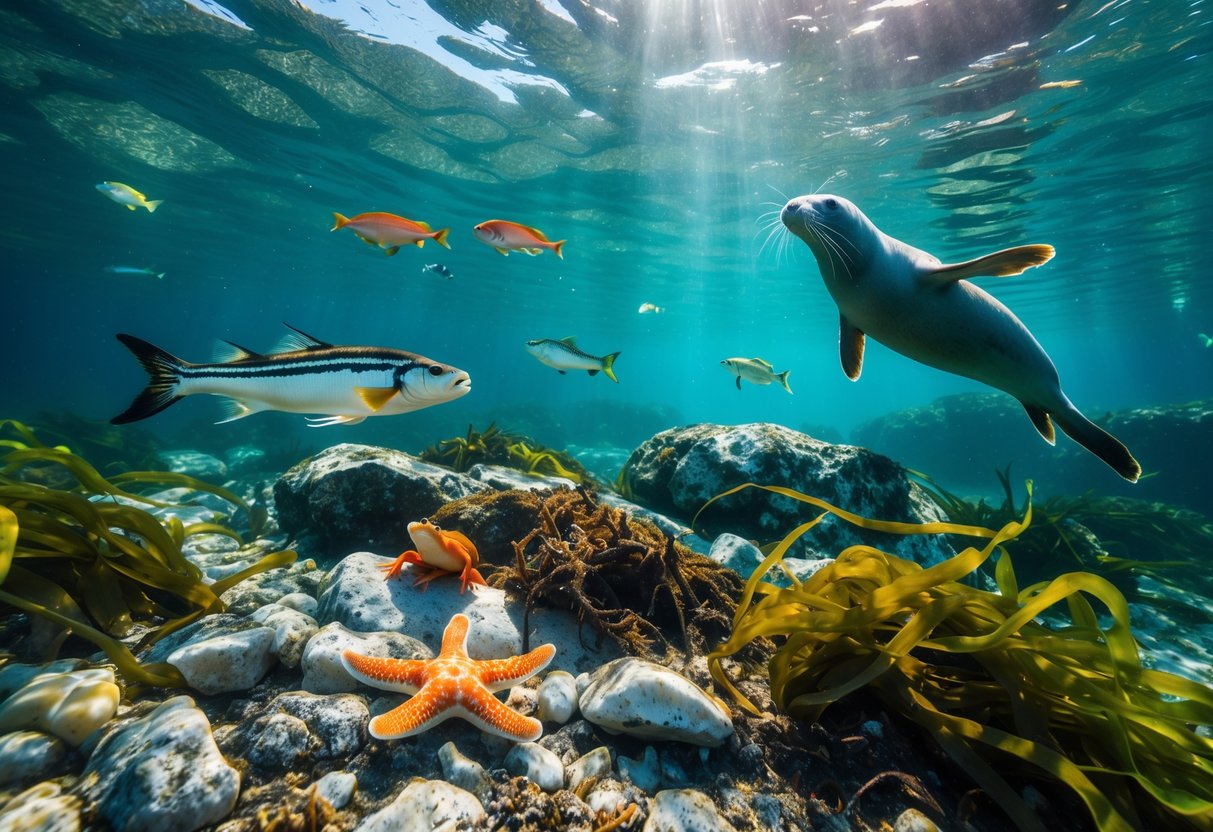
Dolphins and Porpoises
Harbour porpoises are the most common cetaceans swimmers encounter off the south coast. These small marine mammals reach only 1.5 metres in length and surface briefly with a distinctive “chuff” sound.
They typically appear in groups of 2-5 individuals. Harbour porpoises prefer shallow, coastal waters nationwide and often surface three or four times before diving.
Bottlenose dolphins occasionally visit southern English waters. These large, muscular dolphins display uniform grey colouring and can approach swimmers out of curiosity.
Common dolphins stay primarily in deeper offshore waters. Their distinctive cream and white hourglass markings make them easily identifiable when they venture closer to shore.
Both dolphin species are acrobatic and may bow-ride near boats. They travel in small to medium-sized pods and can leap from the water during feeding or play behaviour.
Seals Around the South Coast
Grey seals dominate southern English waters and represent roughly 40% of the global population lives around the UK. These curious mammals often approach swimmers to investigate.
Key identifying features:
- Blotchy, darker colouring
- Prominent snout (especially males)
- Parallel, separated nostrils
- Larger size than common seals
Grey seals haul out in large colonies on beaches and rocks. They display gregarious behaviour and may approach boats or swimmers, though all interactions should remain on the animal’s terms.
Common seals appear less frequently in southern waters. They prefer northern England and Scotland but occasional sightings occur along the south coast.
These seals have cat-like faces with shorter snouts and V-shaped nostril arrangements. When resting on beaches, they often form a distinctive banana shape with head and tail raised.
Looking for a more in depth look at British coastal wildlife
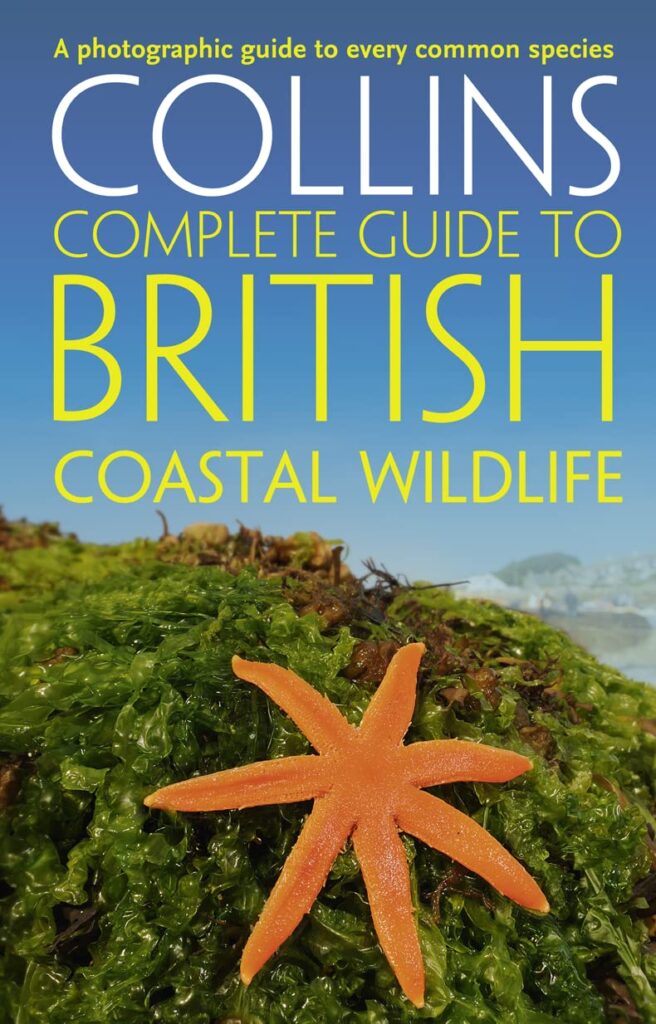
Occasional Whale Sightings
Minke whales provide the most likely whale encounters for south coast swimmers. These 9-metre baleen whales appear dark grey with white undersides and distinctive white “armbands” on their pectoral fins.
Minke whales often feed alone or in small groups. They perform spectacular lunge feeding at the surface, creating opportunities for swimmers to witness this behaviour from a distance.
Larger whale species rarely venture into shallow swimming areas. Fin whales occasionally appear in deeper waters off Cornwall and the south-west but remain far from typical swimming locations.
Aggregations of seabirds often signal whale feeding activity. Swimmers who notice unusual bird behaviour may spot distant whale spouts or dorsal fins on the horizon.
Most whale sightings occur several kilometres offshore in deeper water rather than in coastal swimming areas where most recreational swimmers stay.
Common Fish Species in Shallow Waters
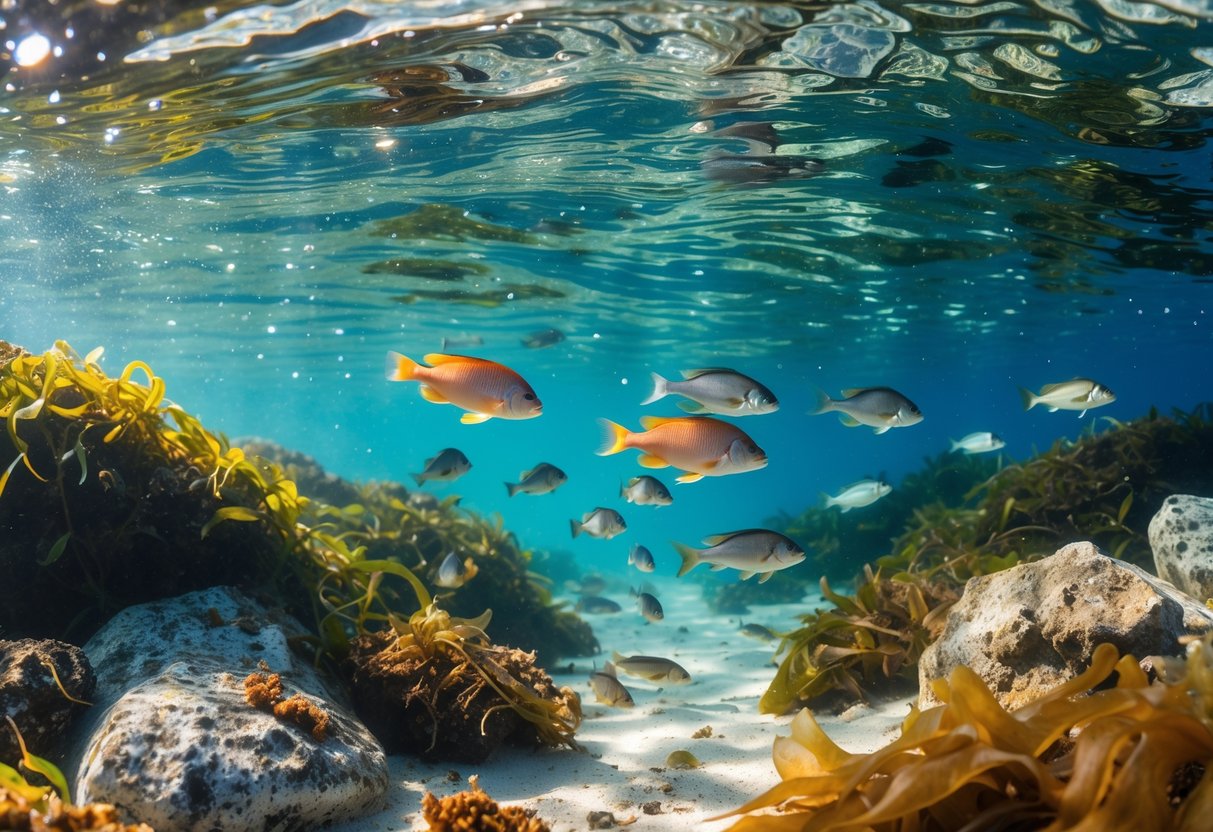
The shallow coastal waters of the south coast host numerous fish species that swimmers might encounter during their sea adventures. Cod, haddock and bass are commonly found in relatively shallow water and are regularly spotted by sea swimmers, whilst smaller species like blennies and pipefish inhabit the rocky coastal areas.
Popular Fish Seen Near Swimmers
Bass are amongst the most commonly encountered fish in shallow coastal waters. These silver-sided predators often hunt in small groups near the surface.
They frequently venture into very shallow water to feed on small fish and crustaceans. Bass can grow quite large, sometimes reaching over 60cm in length.
Cod remain one of the most recognisable fish around British waters. Young cod often inhabit shallow coastal areas before moving to deeper waters as they mature.
Mackerel arrive in large schools during summer months. These streamlined fish create impressive feeding frenzies near the surface, making them highly visible to swimmers.
Pollack prefer rocky coastlines and often swim in mid-water. Their bronze-green colouring helps them blend with kelp and seaweed.
Gurnards are distinctive bottom-dwelling fish with wing-like pectoral fins. The red gurnard and grey gurnard are most common along the south coast.
Lesser-Known Coastal Fish
Blennies are small, characterful fish that inhabit rock pools and shallow rocky areas. The common blenny has slime-covered skin to help them slide between rocks.
The shanny is actually another name for the common blenny. These territorial fish often return to the same hiding spots amongst rocks.
Pipefish are elongated relatives of seahorses. These snake-like fish glide through seagrass beds and around pier supports in shallow water.
Wrasse species include the cuckoo wrasse and ballan wrasse. These colourful fish inhabit rocky reefs and kelp forests close to shore.
Gobies are tiny bottom-dwelling fish that dart between rocks and sand. The sand goby and rock goby are most frequently spotted by observant swimmers.
Bait Fish and Plankton Feeders
Sand eels form large silvery schools in shallow water. These slender fish are vital food sources for larger fish, seabirds, and marine mammals.
They often create spectacular displays when fleeing from predators. Sand eels burrow into sandy seabeds when threatened.
Sprats and sardines arrive in massive shoals during warmer months. These small, shiny fish feed on plankton near the surface.
Whitebait encompasses several species of young fish including herring and sprat. These tiny fish form dense clouds in coastal waters.
Many of these smaller species are filter feeders or plankton consumers. They play crucial roles in the marine food web by converting microscopic organisms into food for larger predators.
Plankton-rich waters attract these bait fish species, which in turn draw larger fish closer to shore where swimmers might observe the entire feeding chain in action.
Fascinating Invertebrates Along the Coastline
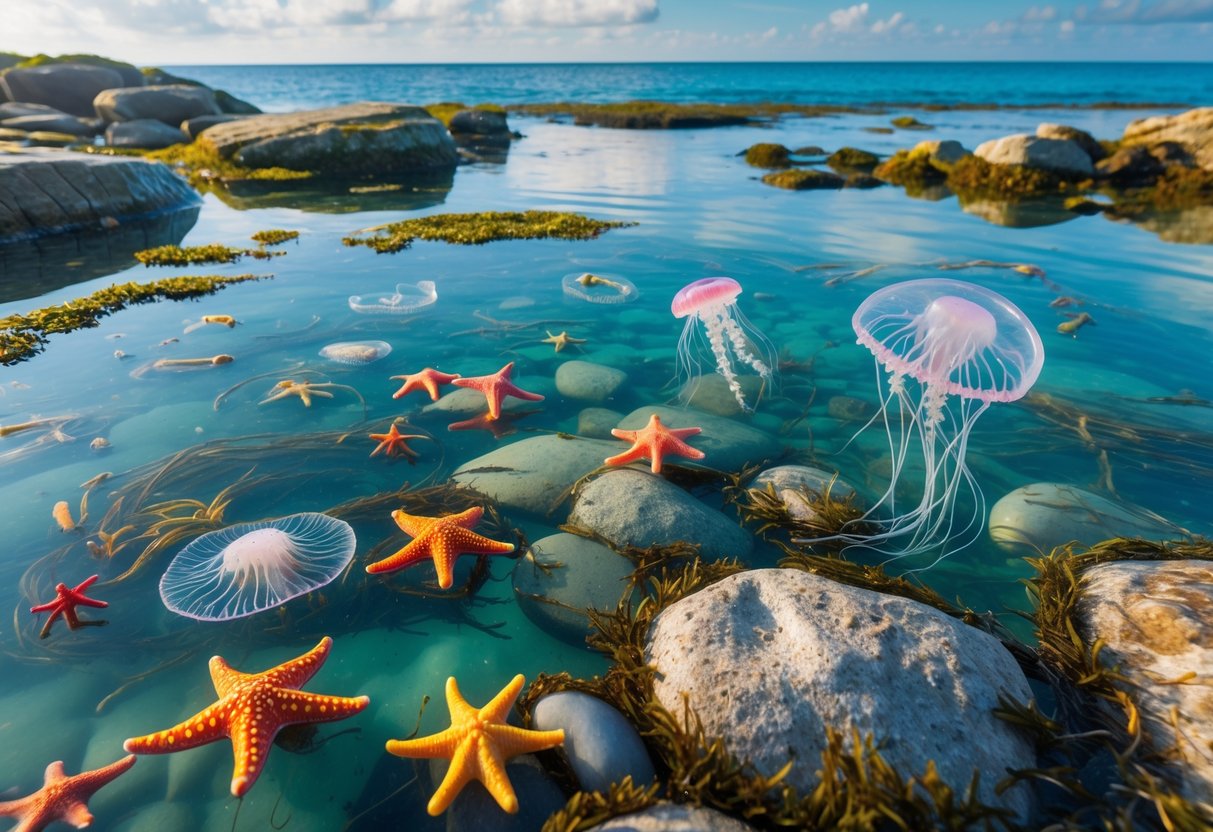
The south coast waters teem with extraordinary invertebrates, from scuttling shore crabs and graceful spider crabs to translucent jellyfish drifting with the currents. Vibrant sea anemones carpet rock pools whilst colourful sea slugs browse amongst the seaweed.
Crabs and Crustaceans
Shore crabs are the most common crustaceans swimmers encounter along the south coast. These hardy creatures inhabit rocky areas and can deliver a sharp nip if handled carelessly.
Common Species:
- Shore crabs: Green-brown shells up to 8cm wide
- Hermit crabs: Use borrowed shells for protection
- Spider crabs: Long spindly legs, triangular bodies
- Edible crabs: Large brown crabs with black-tipped claws
Spider crabs often gather in large groups during summer months. Their legs can span up to 20cm, making them appear more intimidating than they actually are.
Lobsters occasionally venture into shallower waters around rocky outcrops. These blue-black crustaceans typically hide in crevices during daylight hours.
Most crustaceans are harmless to swimmers but may pinch if threatened. They play crucial roles in coastal ecosystems by scavenging and cleaning the seabed.
Jellyfish: Types and Cautions
Several jellyfish species frequent south coast waters during warmer months. The barrel jellyfish is the largest found in UK waters, reaching 1.5 metres in diameter.
Common Types:
- Moon jellyfish: Translucent with four purple rings
- Compass jellyfish: Brown markings resembling compass points
- Blue jellyfish: Bright blue colouration, mild sting
- Lion’s mane jellyfish: Reddish-brown with trailing tentacles
The lion’s mane jellyfish has tentacles reaching 3 metres long and delivers a painful sting. Swimmers should maintain distance from all jellyfish species.
Most stings cause temporary discomfort rather than serious harm. Vinegar can help neutralise remaining tentacle fragments on skin.
Jellyfish populations fluctuate yearly based on water temperature and food availability. Warmer summers typically bring higher numbers closer to shore.
Starfish, Anemones, and Sunstars
Rocky pools and shallow waters host diverse echinoderms and cnidarians. Common starfish grow up to 30cm across and display orange or brown colouration.
Notable Species:
- Common starfish: Five thick arms, orange-brown colour
- Brittlestars: Five spiny arms, more fragile than starfish
- Common sunstars: 10-12 arms, can reach 35cm diameter
- Cushion stars: Small, compact five-armed stars
Sea anemones attach to rocks and pier supports. Beadlet anemones appear dark red with blue spots, whilst snakelocks anemones display bright green tentacles with purple tips.
These creatures are generally harmless to swimmers. Anemones may close their tentacles when touched but pose no threat to humans.
Sunstars are the largest British starfish species. Their multiple arms help distinguish them from common five-armed starfish.
Colourful Sea Slugs and Nudibranchs
Sea slugs and nudibranchs add spectacular colour to underwater encounters. These soft-bodied molluscs browse on algae, sponges, and other marine organisms.
Distinctive Species:
- Sea hares: Large, up to 20cm long with ear-like tentacles
- Sea lemons: Yellow, warty-textured nudibranchs
- Compass sea slugs: Striped patterns, feed on anemones
- Rainbow nudibranchs: Brilliant colours, delicate projections
Nudibranchs are specialist feeders, often targeting specific prey species. Their bright colours frequently warn predators of toxicity or bad taste.
Most species measure just a few centimetres long. Their intricate forms and vivid hues make them highly sought after by underwater photographers.
Sea slugs lack protective shells, relying instead on chemical defences and camouflage. They represent some of the most beautiful invertebrates in British waters.
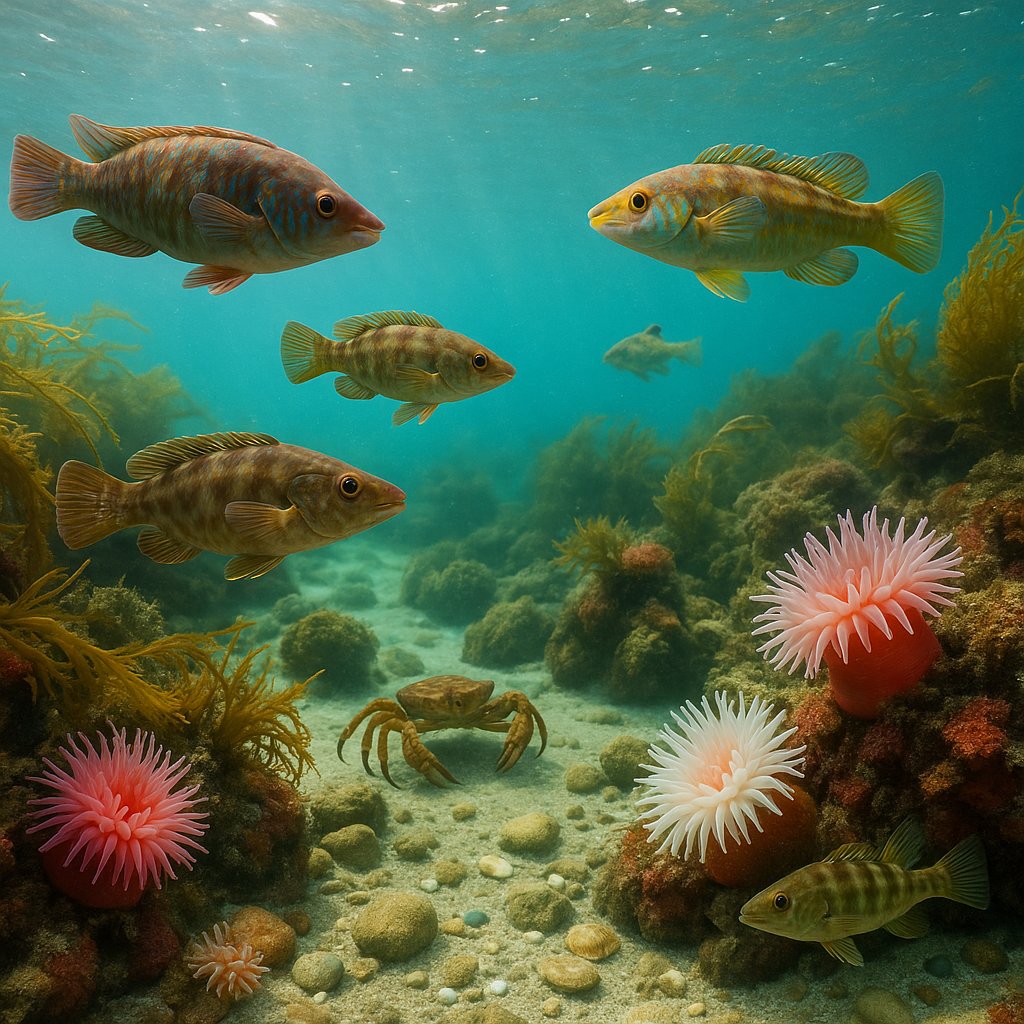
Cephalopods and Camouflaged Creatures
The waters off England’s south coast host remarkable cephalopods that showcase extraordinary camouflage abilities. These masters of disguise can instantly transform their appearance to blend seamlessly with their surroundings.
Cuttlefish and Their Adaptive Abilities
Cuttlefish represent one of the most sophisticated camouflage artists in British waters. These cephalopods can change colour based on their activities using specialised cells called chromatophores.
Key camouflage abilities include:
- Instant colour transformation
- Texture modification
- Shape alteration
- Pattern mimicry
Common cuttlefish (Sepia officinalis) frequently appear in shallow coastal waters during spring and summer months. They possess the remarkable ability to instantly change shape and texture, allowing them to blend with sand, rocks, and seaweed.
Swimmers might spot these creatures hovering above sandy bottoms or rocky outcrops. Their bone-white cuttlebones often wash ashore after the animals die, providing evidence of their coastal presence.
Octopus and Related Species
The common octopus (Octopus vulgaris) inhabits rocky areas and crevices along the south coast. These intelligent cephalopods demonstrate incredible adaptive camouflage that surpasses even cuttlefish capabilities.
Octopuses can mimic multiple textures simultaneously, creating bumpy skin to match barnacle-covered rocks or smooth surfaces to blend with sand. Their colour-changing speed exceeds that of most other marine animals.
Typical hiding spots include:
- Rock pools at low tide
- Underwater caves and crevices
- Jetty pylons and pier structures
- Kelp forests in deeper waters
Less common but occasionally observed, the curled octopus (Eledone cirrhosa) prefers muddy or sandy seabeds. This smaller species exhibits similar camouflage traits but typically remains in deeper offshore waters, making encounters with swimmers relatively rare.
Shellfish, Sponges, and Other Marine Dwellers
The rocky shores and sandy bays of England’s south coast host an abundance of stationary marine life that filters water and creates complex underwater communities. These creatures attach themselves permanently to rocks, pier supports, and harbour walls where they feed by extracting nutrients from passing water.
Molluscs: Mussels, Oysters, and More
Blue mussels cluster densely on rocks and breakwaters throughout the south coast. They attach using strong threads called byssal fibres that anchor them against powerful waves.
Native oysters still inhabit deeper waters off the coast, though their numbers have declined significantly. Commercial oyster beds near Whitstable and the Solent produce the famous English oysters.
Limpets appear as cone-shaped shells stuck tightly to rocks. They graze on algae during high tide and return to the exact same spot each time.
Swimmers often encounter whelk shells washed up on beaches. These large spiral shells once housed carnivorous sea snails that hunt other molluscs.
Cockles burrow in sandy areas of estuaries and shallow bays. Their ridged shells are easily recognisable when found empty on the shore.
Razor clams live buried in sand with only their siphons visible. They can dig rapidly when disturbed, disappearing quickly into the sediment.
Sponges and Filter Feeders of the Coast
Sea sponges are some of the most diverse, abundant, and simple animals in the ocean found along England’s rocky coastlines. Breadcrumb sponges form bright yellow or orange crusts on pier pilings and harbour walls.
Boring sponges create small holes in limestone and chalk cliffs. They dissolve the rock chemically to create homes for themselves.
The ping-pong tree sponge lies in wait for small crustaceans using hook-like structures to trap prey. These carnivorous species supplement their filter feeding with active hunting.
Sea squirts attach to rocks and boat hulls in clusters. They pump water through their bodies to filter out tiny food particles.
These filter feeders process enormous volumes of seawater daily. A single sponge can filter its own body volume every few seconds.
Barnacles and Other Sessile Animals
Acorn barnacles cover rocks, piers, and boat hulls in white, volcano-shaped clusters. They extend feathery legs to catch plankton when submerged.
Goose barnacles hang from floating debris and cliff faces on flexible stalks. Their shells resemble miniature geese necks, giving them their distinctive name.
These stuck-on-the-bottom creatures include various species that remain fixed in place as adults. Sea anemones wave their tentacles from rock crevices, stunning small fish with their stinging cells.
Hydroids form delicate branching colonies that look like tiny underwater trees. They capture microscopic prey using stinging tentacles.
Tube worms build calcareous tubes on rocks and shells. Their colourful feeding tentacles emerge like flowers when the tide covers them.
Seabirds and Their Role in the Coastal Environment
Gannets perform spectacular diving displays whilst hunting fish near the coast, whilst puffins nest in clifftop burrows and serve as indicators of marine ecosystem health. Both species play vital roles in coastal ecological processes through nutrient transport and predator-prey relationships.
Gannets and Seabird Activity
Northern gannets create dramatic feeding spectacles along England’s south coast during spring and summer months. These large seabirds plunge from heights of 30 metres into coastal waters to catch fish.
Feeding Behaviour
- Dive speeds reach up to 60 mph
- Target mackerel, herring, and sardines
- Hunt in groups near headlands and offshore waters
Gannets nest in large colonies on cliffs with notable populations on nearby islands. Their presence indicates healthy fish stocks in local waters.
The birds transport nutrients from sea to land through their droppings. This process enriches clifftop vegetation and supports diverse plant communities.
Swimmers may observe gannets’ distinctive white plumage and yellow heads during their dramatic fishing displays. The birds often follow fishing boats and concentrate around productive feeding areas.
Puffins and Iconic Clifftop Residents
Atlantic puffins represent one of Britain’s most recognisable seabirds, though sightings from the water remain relatively uncommon along England’s south coast. These colourful-billed birds nest in burrows on cliff edges on islands and remote headlands.
Key Characteristics
- Distinctive orange, red, and yellow beaks during breeding season
- Black and white ‘tuxedo’ plumage
- Compact, stocky build suited for underwater swimming
Puffins serve as indicators of ocean health through their specialised diet of small fish, particularly sand eels. Population changes reflect marine ecosystem conditions.
The birds spend most of their time at sea outside the breeding season. They return to the same clifftop colonies each spring to raise their young.
Their burrows help aerate cliff soil whilst their droppings fertilise coastal grasslands. This creates habitat for wildflowers and insects that support other wildlife species.

